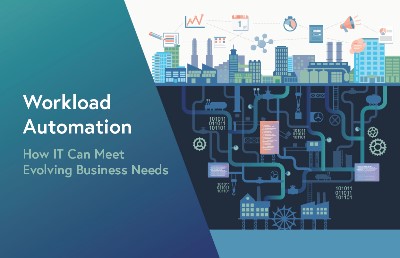Gartner ITxpo Reveals Ways That IT Can Drive Digital Transformation
Key takeaways from Gartner ITxpo about digital transformation from Gartner Chief of Research Dennis Gaughan & CTO of Starbucks Gerri Martin-Flickinger.

At Gartner Symposium/ITxpo this year, one reoccurring theme that seemed to circulate through many of the sessions was the idea of Digital Transformation. In a Wall Street Journal interview session that I attended at the conference, Gerri Martin-Flickinger, CTO of Starbucks, defined Digital Transformation as the connection and orchestration of systems, data, and processes to enhance the user experience. When many of us think business transformation, we think about business processes and how the CEO, COO, and CFO may navigate the organization through such a transition. IT is rarely thought of as at the forefront of driving transformation in the organization, but with the right tools and expertise, IT has the potential drive innovation and guide your organization to a total digital transformation.
This idea is one that Gartner Managing VP and Chief of Research, Dennis Gaughan, focused on in his session titled Focus on Engagement, Value, and Outcomes to Eliminate the Boundary Between Business and IT, as well. Gaughan discussed how IT teams can break down the invisible barrier between IT and business users so that together they can focus on collaboration and drive the organization’s Digital Transformation. In his session, he highlighted 3 ways IT can eliminate the boundaries preventing them from being the driving force behind Digital Transformation, these are:
- IT must know the business
- IT must impact the impact the business
- IT must be the business
IT staff have a lot on their plate to begin with, so these three tasks can seem like a large undertaking. Here’s how you can break it down to make it simpler:
- To truly know the business, one must understand the business’ values. Ask yourself, what is your organization’s business model? What does your organization value most? Robert Naegle, Gartner Research VP, mentioned in his session that the 3 things most organizations care most about are revenue, cost, and risk. If step one to driving the Digital Transformation is knowing the business, IT organizations should think about how revenue, cost, and risk affect their organization, and how their duties within IT affect these factors.
- This brings us to step 2, which is understanding how IT impacts the business. From a high-level view, you could say that everything IT does affects the organization. IT facilitates the majority of back-end transactions that keep systems, servers, applications, and technologies up and running smoothly throughout every department. IT can take this one step further; in fact, Gaughan mentioned that what IT should do to really impact the business is focus on application and process simplification, reducing costs and complexity, and driving change. With the right solution, IT can address all these aspects. Take an IT automation solution for example. The right IT automation solution can simplify your IT and business processes and eliminate complexity by coordinating and consolidating the disparate applications and technologies throughout the entire organization. The right solution will give you a single point of control where you can manage and monitor your entire IT environment and will in turn reduce costs associated with a variety of disparate tools that come with their own licensing and support costs. This solution will free up senior resources and give them time to focus on innovation and Digital Transformation.
- Finally, IT must be the business. Gaughan told us that an individual in IT must be indistinguishable from an individual in Human Resources for example. Not to say they must possess all the same skills and knowledge, but their goals and values for the organization should be akin to one another. To drive the organization into a full Digital Transformation, IT must think adaptability and innovation. In a session about Driving Business Agility, Marketing Manager at Advanced Systems Concepts, Frank Melchiorre, spoke about making IT less busy so that they have time to innovate. An automation solution can offload from IT some of the time consuming, day-to-day tasks that they must accomplish, and give them time to think. This results in creativity and subsequently, innovation—these are crucial in driving the business to a Digital Transformation.
In the previously mentioned Wall Street Journal interview, the panelists were asked about the key roles that needed to be filled to create a successful Digital Transformation team. Starbucks CTO Gerri Martin-Flickinger explained that having a leading architect on your team is critical, and this person is usually an engineer who possesses the ability to develop the technology necessary to drive change. Unexpectedly however, Martin-Flickinger also stressed the importance of having an artist on your Digital Transformation team. She explained that it was not only necessary to have someone who can create the technology, but to have someone with an eye for design, who can think outside the box and bring creativity to the team. For example, at Starbucks, the development of their mobile app is a leading component of Digital Transformation. Although they required an engineer to build the app on the back-end, they also needed someone more artistic to think about the aesthetics (ie. colors, content, theme, and overall user interface) of the app. In their case, this was a person who could take the feeling of being in a Starbucks store, and bring that look and feel to a digital, mobile phone application.
While an artist often comes from your web design team or your graphics team, an automation solution can provide your organization with the ability to pull an artist out of IT. An IT automation solution ultimately gives IT the time to think and innovate by offloading from them some of the tedious day to day tasks that they need to accomplish. At the end of the day, this time to think and innovate enables them to explore creativity. By following Dennis Gaughan’s 3 steps to breaking down the boundary between business and IT, your IT organization can begin to think out of the box, and can subsequently be a driving force in your organization’s Digital Transformation.
Are you ready to drive your organization’s Digital Transformation? Take the next step by reading our white paper on intelligent automation:
Business needs are rapidly evolving.
Stay ahead of new tech trends and business demands with unified workload automation.








